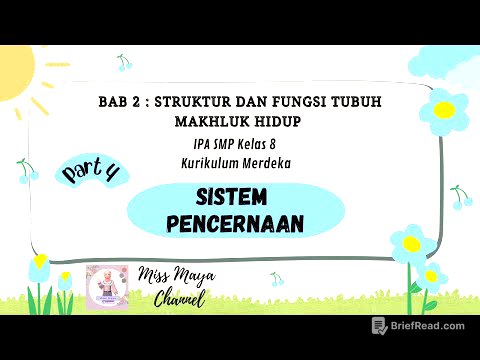TLDR;
This video discusses a Cleveland Clinic study that found the influenza vaccine to have a negative efficacy of 26.9% during the 2024-2025 respiratory viral season, meaning vaccinated individuals were more likely to contract the flu. The study's findings are consistent with previous research showing negative efficacy for COVID-19 vaccines. The presenter expresses concern that these results may lead to a push for mRNA influenza vaccines, which he views with apprehension.
- The influenza vaccine had a negative efficacy of 26.9% in the 2024-2025 season.
- This finding aligns with previous studies showing negative efficacy for COVID-19 vaccines.
- There is concern that this data may prompt a shift towards mRNA influenza vaccines.
Introduction: Negative Efficacy of Flu Vaccine [0:01]
The presenter introduces a Cleveland Clinic study that reveals the influenza vaccine had a negative efficacy of 26.9% during the last winter season. This means that individuals who received the flu vaccine were approximately 27% more likely to contract influenza. The presenter notes the study does not detail the pharmaceutical industry's profits from the vaccine or list its side effects, but suggests the side effects would likely be less severe than those associated with mRNA vaccines, as this is a dead virus vaccine.
Prior Research on COVID-19 Vaccine Efficacy [0:58]
The presenter references a previous study from the same group in 2023, which demonstrated negative efficacy for the COVID-19 vaccine. A chart from that study illustrates that individuals with more COVID-19 vaccine doses had a higher cumulative incidence of the virus. Specifically, those with no doses had the lowest incidence, while those with one, two, or three doses showed progressively higher rates of infection over a six-month period. The presenter emphasizes the difficulty in achieving negative vaccine efficacy and the absence of consideration for adverse reactions in the study.
Natural Immunity vs. Vaccine Effectiveness [2:22]
The presenter refers to the original Cleveland study, which highlighted the effectiveness of natural immunity. Those most recently infected with a similar strain of the virus were least likely to contract a new infection. The study indicated that individuals infected during the omicron phase had lower cumulative incidence of COVID-19 compared to those infected in the pre-omicron era or those not previously infected.
COVID-19 Vaccine Doses and Infection Risk [3:13]
The presenter reiterates findings from the coronavirus disease 2019 bivalent vaccine study, stating that a higher number of previously received vaccines correlated with an increased risk of contracting COVID-19. According to the Cleveland data, maximizing the number of COVID-19 vaccines increases the likelihood of contracting the virus, without considering the side effects.
Influenza Vaccine Effectiveness Study [3:46]
The presenter discusses the study evaluating the effectiveness of the influenza vaccine during the 2024-2025 respiratory viral season. The study included employees of the Cleveland Clinic in Ohio as of October 1, 2024, and compared the cumulative incidence of influenza between vaccinated and unvaccinated groups. The research methodology was sound, and the results indicated that vaccinated individuals contracted influenza more frequently.
Study Results: Negative Immunity [5:05]
The presenter details the results of the influenza vaccine study, which involved over 53,000 employees, with 82.1% receiving the influenza vaccine. Among this group, there were 179 cases of influenza, representing 2.2% of the vaccinated population. Initially, the cumulative incidence of influenza was similar between vaccinated and unvaccinated individuals, but over time, the vaccinated group showed a more rapid increase in influenza cases.
Statistical Analysis and Generalizability [6:41]
The presenter explains that the study's analysis was adjusted for factors such as age, sex, clinical nursing job, and employment location. The risk of influenza was significantly higher for the vaccinated group compared to the unvaccinated, with a hazard ratio of 1.27, indicating a 27% increased likelihood. The probability of this result occurring by chance was very low (7 in 1000), and the 95% confidence interval confirmed a clear negative efficacy. The study concluded an overall negative efficacy of 26.9%, and the results are generalizable to relatively healthy adults in the United States.
Study Conclusion and Implications [8:59]
The presenter shares the study's conclusion that influenza vaccination of working-aged adults was associated with a higher risk of influenza during the 2024-2025 respiratory viral season, suggesting the vaccine was ineffective in preventing influenza and may have caused more cases. He expresses satisfaction in his decision not to receive the influenza vaccine, as it would have increased his chances of contracting the disease.
Influenza Overview and Vaccine Composition [9:45]
The presenter provides an overview of influenza, noting it as a serious respiratory viral infection that caused 145,000 deaths worldwide in 2017. He mentions the seasonal pattern of the illness and the annual recommendation of influenza vaccines by regulatory agencies, while also noting that these agencies are largely funded by the pharmaceutical industry. The vaccine used in the study was a trivalent inactivated vaccine, targeting two influenza A virus types (H3N2 and H1N1) and an influenza B virus.
Concerns About Future Vaccine Strategies [11:29]
The presenter highlights that the negative efficacy observed in the 2024-2025 flu season aligns with the teachings of Professor Robert Clancy and data from COVID-19 vaccine studies in Cleveland and Quebec. He expresses concern that the poor performance of dead viral vaccines may lead to a push for mRNA influenza vaccines, a prospect he finds "horrific." He concludes by reiterating the negative 26.9% efficacy of the influenza vaccine in the working-age population, emphasizing that it makes individuals more likely to contract the illness it is supposed to prevent, while also exposing them to potential adverse reactions.









